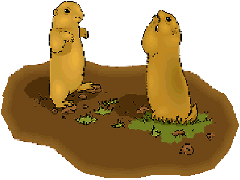Violets are rugged plants and can more often than not be
left to their own devices to survive. However, if I were
tending a very special violet, part of this extra
attention would include mulching the plants after the
flowering period. Mulching is beneficial to violets for
several reasons, and they generally being woodland plants,
appreciate. And mulch also helps in reducing infestations
of red spider mites by raising the moisture level
immediately around the plants. Red spider mites, which
attack the underside of leaves, thrive in hot, dry
conditions. The third reason for applying mulch is the
side benefit of providing nutrients to the roots. This can
only happen when using "live" mulch, one that is
manure-based compost or some from the home compost
pile. A
mulch of peat moss or bark-based mulches will not add any
nutrients. However, a slow release fertilizer could be
mixed into the mulch prior to spreading around the plants.
The rest of the late spring and summer season there is
little required by the violets other than a good, deep
soaking as needed through the hot summer months. Watch
for any diseased-looking leaves or leaves curled by leaf
roller caterpillars and particularly, watch for leaves
which have curled or hardened. This is a sign of the
Violet Gall Midge. These leaves should be removed and
destroyed. It is also helpful to occasionally spray the
underside of the violet leaves with a sharp spray of
water. This helps reduce populations of red spider
mites. Also watch for ripe seed from your favorite
violet plants and save for our coming seed exchange!

|
Despite the tender loving care one gives to the special
violets, there can be unforeseen problems. Upon my
return from a trip to England in 1998, I was anxious to
closely examine my plant of Violet 'Double Russian'
which had a number of plump buds when I left. This was
planted in a raised bed with other stock plants of
violets receiving special care. When I checked on it the
first morning back I could find no sign of the plant. It
was gone! I thought perhaps the chickens or the pet
rabbits had dug it up. Then my son Reid investigated and
found a gopher tunnel under where the plant had been. It
was the only violet to disappear and my only plant left
of 'Double Russian.' Where's the strychnine?